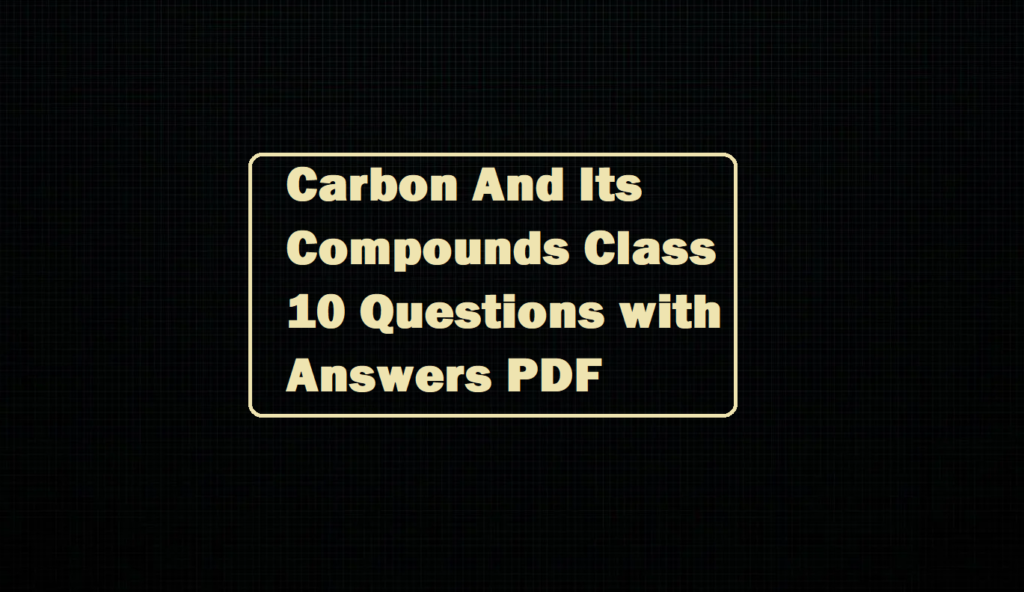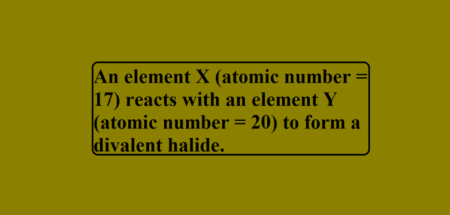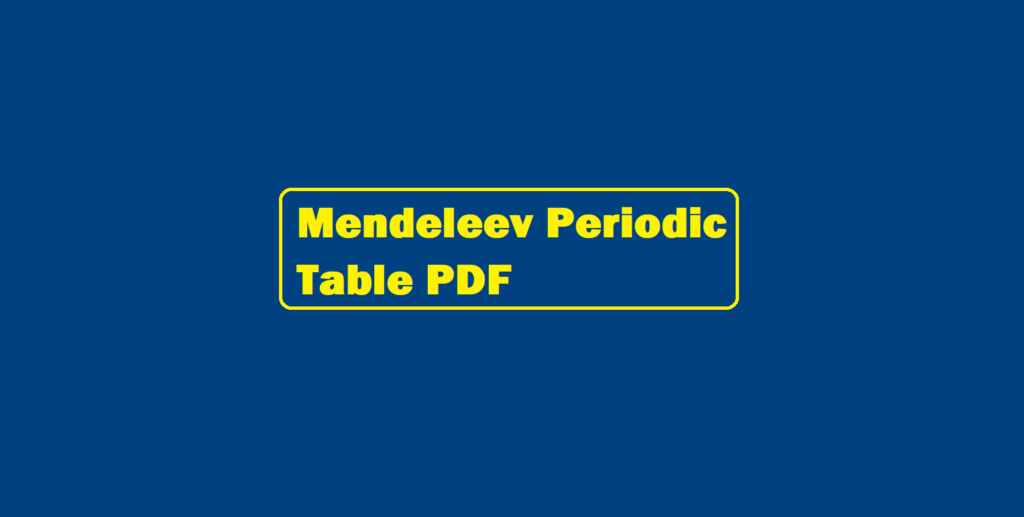Carbon And Its Compounds Class 10 Questions with Answers PDF
Carbon And Its Compounds Class 10 Questions with Answers PDF
Que 1. Covalent compounds have low melting and boiling point. Why?
Ans 1. Covalent compounds have low melting and boiling points because the forces of attraction between molecules of covalent compounds are very weak.
Que 2. What is the role of concentrated H2SO4in the esterification reaction?
Ans 2. In an esterification reaction, a carboxylic acid reacts with alcohol to form ester and water in the presence of concentrated sulphuric acid. This reaction is reversible and this reverse reaction is called ester hydrolysis.
Concentrated sulphuric acid being a strong dehydrating agent removes water from the reaction mixture. As a result, the reaction proceeds only in the forward direction to form an ester.
RCOOH +ROH —–Conc. H2SO4—→ RCOOR + H2O
Que 3. Name the functional group present in each of the following organic compounds:
(i) C2H5Cl
(ii) C2H5OH
Ans 3. The functional group present in:
(i) C2H5Cl – Chloro (halide)
(ii) C2H5OH – alcohol
Que 4. Name the second member of the alkynes family. Give its structure.
Ans 4 The second member of the alkyne family is propyne. The structural formula is CH3−C≡CHCH3−C≡CH.
Que 5. What are the two properties of carbon which lead to the huge number of carbon compounds we see around us?
Ans 5. Two properties of carbon that lead to the huge number of carbon compounds we see around us are
(i) Carbon has six valence electrons which are actually a high number of valencies.
(ii) Covalent bonding happens easily with carbon atoms and numerous others such as oxygen, chlorine, nitrogen, Sulphur, hydrogen, etc.
Que 6. What is the difference in the molecular formula of any two consecutive members of a homologous series of organic compounds?
Ans 6. —CH2— is the difference in the molecular formula of any two consecutive members of a homologous series of organic compounds.
Que 7. Name a cyclic unsaturated carbon compound.
Ans. Benzene is a cyclic unsaturated carbon compound.
Que 8. Given a chemical test to distinguish between
(i) Ethane and ethene
(ii) Ethanol and ethanoic acid
(iii) Soaps and Detergents
Ans. (i) Ethene decolorizes the yellow colour of bromine while ethane does not.
(ii) Ethanoic acid gives a brisk effervescence with sodium hydrogen carbonate while ethanol does not.
(iii) Soaps form curdy white precipitate or scum with hard water while detergents do not form any precipitate.
Que 9. Write the name and formula of the second member of the carbon compounds having a functional group – OH.
Ans 9. The second member of the alcohol family – is C2H5OH (Ethanol).
Que 10. Which organic compound is added to make ethanol unfit for drinking purposes? What is the name of the mixture formed?
Ans 10. Methanol is highly poisonous and is added in small amounts to ethanol in order to make it unfit for drinking purposes. This mixture is called methylated spirit or denatured alcohol.
Que 11. How would you distinguish experimentally between alcohol and carboxylic acid?
Ans 11. In reaction with Sodium Carbonate, Carboxylic acids produce carbon dioxide gas which turns lime water milky whereas alcohols do not give this reaction. This experiment can be used to distinguish between alcohol and carboxylic acid.
The reaction of Carboxylic acid with sodium carbonate:
2CH3COOH + Na2CO3 → 2CH3COONa + H2O + CO2
Que 12. What is meant by a saturated hydrocarbon?
Ans 12. Those hydrocarbons in which the valency of carbon is satisfied by single bonds only are called saturated hydrocarbons.
Que 13. Explain the formation of scum when hard water is treated with soap.
Ans 13. Hard water contains hydrogen carbonates, chlorides and sulphates of calcium and magnesium which reacts with soap to form scum. For example, calcium chloride reacts with soap to form scum.
Sodium stearate + Calcium chloride → sodium chloride + Calcium stearate(scum)
Que 14. What are covalent compounds? Why are they different from ionic compounds? List their three characteristic properties.
Ans 14. (i) The chemical bond formed by the sharing of electrons between two atoms is known as a covalent bond. The molecules formed by sharing of electrons between two or more same atoms or between two or more non-metals are called covalent compounds.
(ii) Covalent compounds are different from ionic compounds as ionic compounds are formed by the transference of electrons.
Characteristics of covalent compounds:
(i) Covalent compounds usually have low melting and boiling points as they are formed by electrically neutral molecules. So, the force of attraction between the molecules of covalent compounds is very weak. Only a small amount of heat energy is required to break these forces.
(ii) Covalent compounds are usually insoluble in water but they are soluble in organic solvents.
(iii) Covalent compounds do not conduct electricity as they do not contain ions.
Que 15. Why are carbon and its compounds used as fuels in most cases?
Ans 15: Carbon compounds are used as fuel because they burn with a clean flame and no smoke is produced which is highly exothermic. Carbon compounds have higher maximum ignition temperature and their combustion can be restrained. Hence, carbon and its compounds are a great source of fuel.
Carbon And Its Compounds Class 10 Questions with Answers PDF


